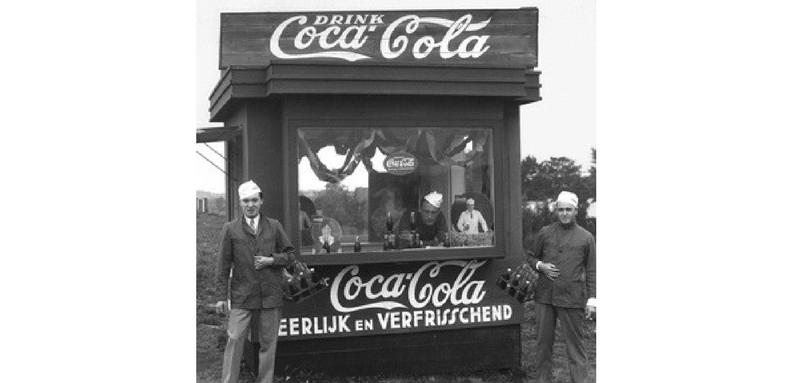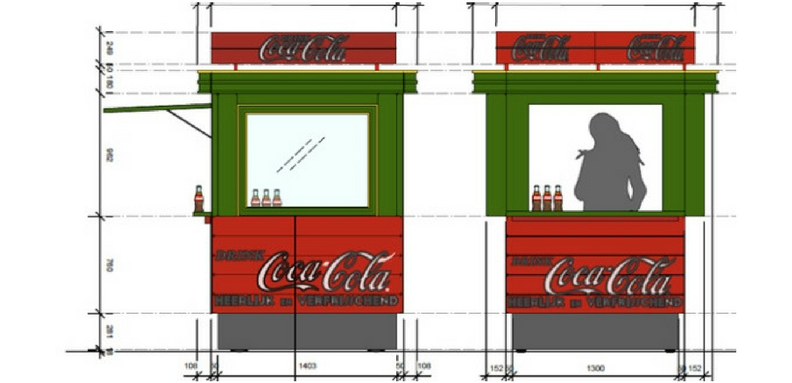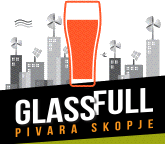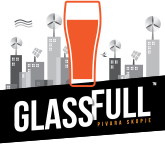

COCA-COLA OLYMPIC GAMES DEBUT IN AMSTERDAM: THE STORY ABOUT THE RE-MAKING OF THE COCA-COLA KIOSK ON THE OLYMPIC GAMES IN 1928


The photo is of a Coca-Cola kiosk at the 1928 Amsterdam Olympic Stadium where Coca-Cola made its Olympic Games debut. Three salesmen stand at the kiosk wearing Coca-Cola branded jackets and caps, while a Dutch translation of Delicious and Refreshing is hand-painted on the front of the stand. Then current, but now vintage, posters and cutouts adorn the booth with the message that Coca-Cola is sold 8 million times a day.
The photo and kiosk have always been important because of the symbolism of the moment and the spirit of adventure that must have been present back then. Coca-Cola was not even bottled in The Netherlands in 1928 (that came a few years later, in 1930). In fact, the Coca-Cola you see in this photo was shipped from the U.S. with athletes heading over to compete in the Games.
Not long ago, Coca-Cola was approached by its team in the Netherlands to help with a project celebrating the 1928 Olympic Stadium. A few decades ago, the stadium was saved from demolition by concerned citizens and is still an active sporting arena. There was a photographic history of Coca-Cola involvement of the 1928 Games in the room that was to be renovated, the photo of the kiosk generated an instant idea: What if we rebuilt the kiosk and created a 1928 vignette? We were confident that it would create an immersive experience.
The idea resonated, and the planning began.
One of the first questions concerned the color of the kiosk. The first rendering the agency sent depicted the whole structure in bright Coca-Cola red. The team had been working from our black-and-white photo and assumed everything would have been red. We told them that, in 1928, while red was a dominant color in our advertising, the Coca-Cola color pallet was actually much broader and that dark-green, bright-yellow and classic white were almost always used. We sent several standardization guides from 1923, 1928 and 1936 to give them both a feel for the colors and a sample to match in today’s paint. We felt the kiosk would have been dominated by the green; even in the black-and-white photo, it appeared to match the advertising posters that are visible. The space around the logo would have been red.
The new renderings of the kiosk were updated, and the project began to hit the next stage. Ginny Van Winkle, who works on exhibits, pulled the artifacts from our collection. In order to ensure their safety while on display, we had custom mounts made to allow them to be attached to the counter and wall in a manner that would not hurt the artifacts.
The carriers were the toughest part. We could not find an exact match, so we used two from the 1930s. The entire collection of items was crated up and shipped to Amsterdam, which they will call home for the next four years.
The experience of Ted Ryan – Director of heritage communications at The Coca-Cola Company, who has been working on the project was like this: “When I arrived at the Stadium to install the artifacts at the exhibit, I was amazed to walk in the room and see the kiosk. It looked exactly as I had envisioned it, and matched the rest of the 1928 room celebrating the wonderful partnership between the Olympic Games, the Amsterdam Olympic Stadium and Coca-Cola. I have done a number of interesting projects in my career at Coca-Cola, but this one is near the top of the list”.









